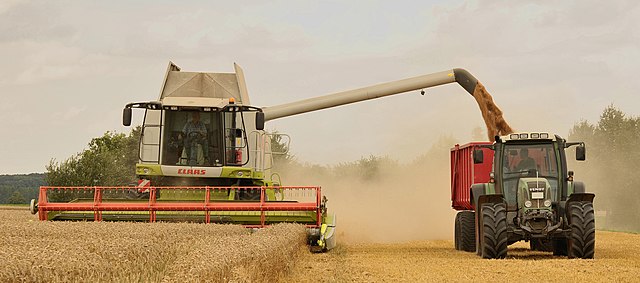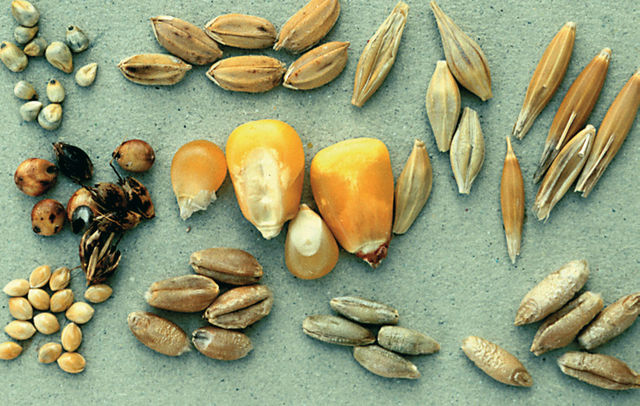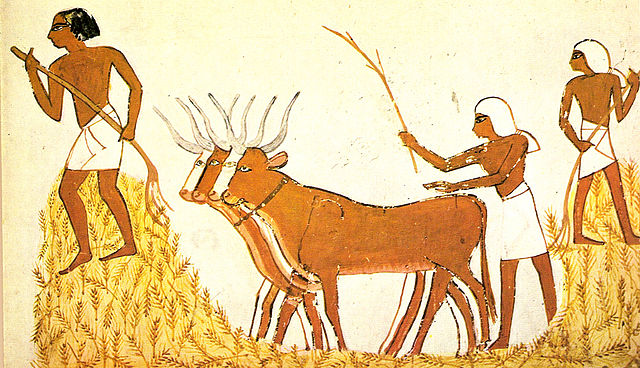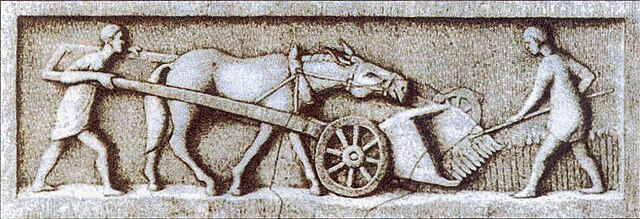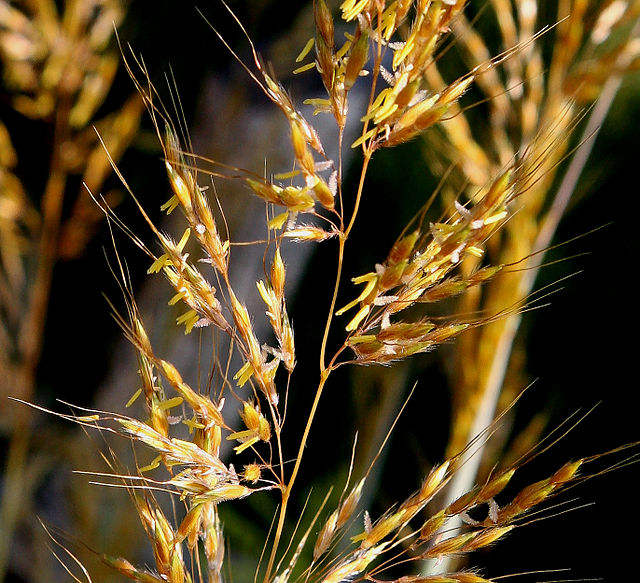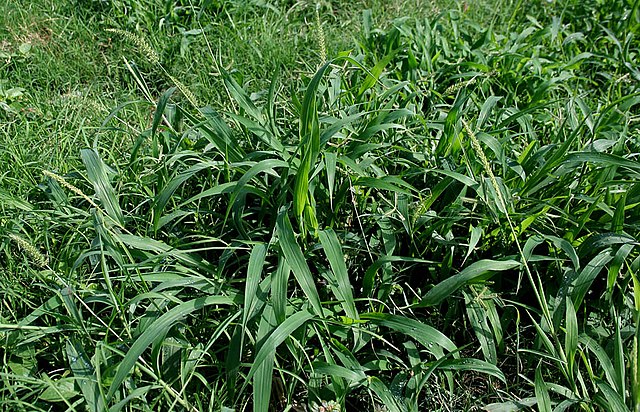A cereal is a grass cultivated for its edible grain. Cereals are the world's largest crops, and are therefore staple foods. They include rice, wheat, rye, oats, barley, millet, and maize. Edible grains from other plant families, such as buckwheat and quinoa are pseudocereals. Most cereals are annuals, producing one crop from each planting, though rice is sometimes grown as a perennial. Winter varieties are hardy enough to be planted in the autumn, becoming dormant in the winter, and harvested in spring or early summer; spring varieties are planted in spring and harvested in late summer. The term cereal is derived from the name of the Roman goddess of grain crops and fertility, Ceres.
Harvesting a cereal with a combine harvester accompanied by a tractor and trailer.
Cereal grains: (top) pearl millet, rice, barley (middle) sorghum, maize, oats (bottom) millet, wheat, rye, triticale
Threshing of grain in ancient Egypt
Roman harvesting machine
Poaceae or Gramineae is a large and nearly ubiquitous family of monocotyledonous flowering plants commonly known as grasses. It includes the cereal grasses, bamboos, the grasses of natural grassland and species cultivated in lawns and pasture. The latter are commonly referred to collectively as grass.
Poaceae
Grass flowers
Drawing of Anomochloa marantoidea, one of the most primitive living grass species
Setaria verticillata from Panicoideae

